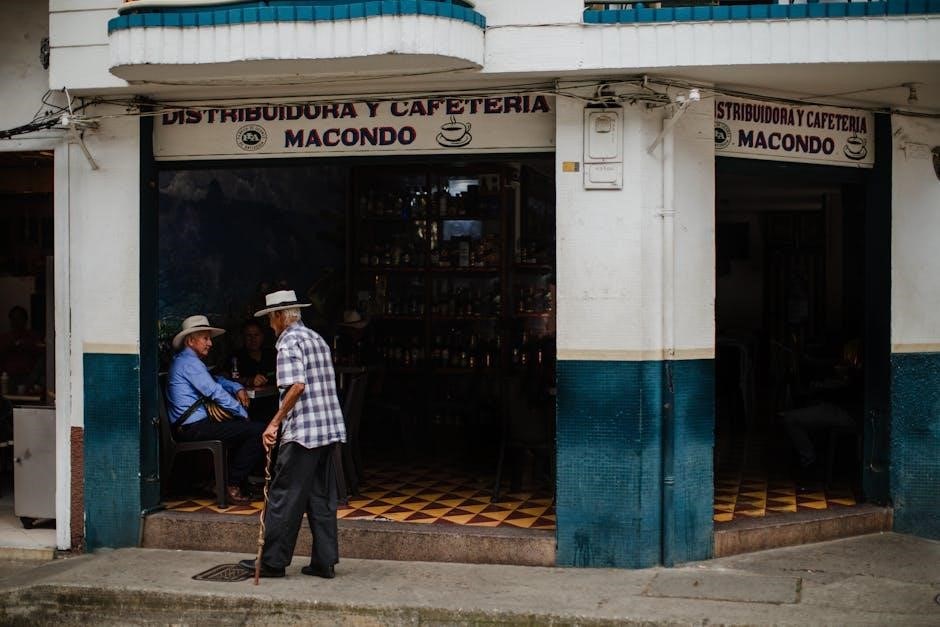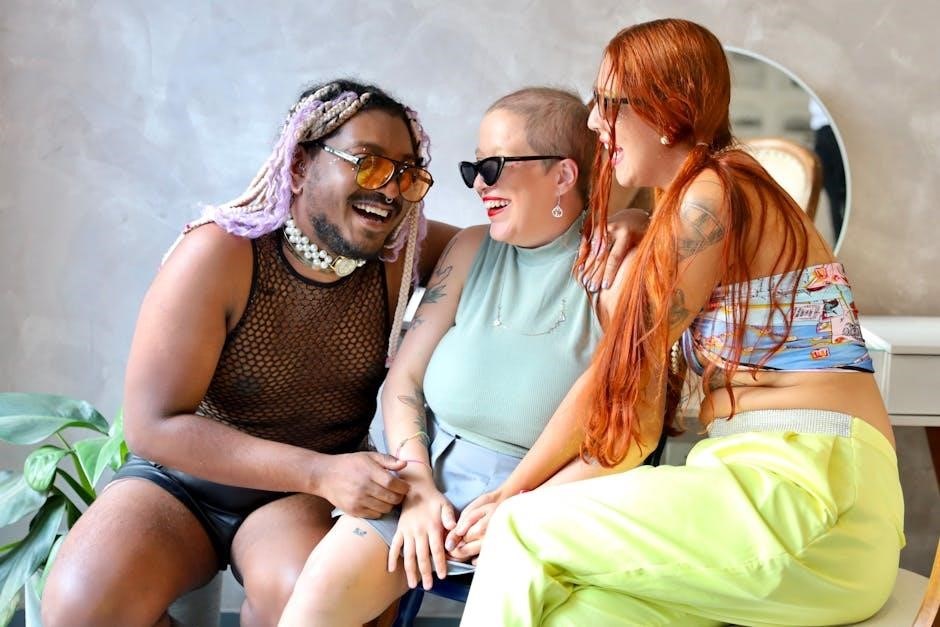Midwestern conversation is a unique blend of politeness, understatement, and community-focused dialogue. It reflects the region’s friendly, humble nature, often balancing sincerity with a dry sense of humor.

Conversational Staples
Midwestern conversations often include phrases like “You betcha,” “Oh yah,” and “Not a problem,” reflecting a culture of friendliness and humility through simple, heartfelt expressions.
Expressions of Politeness
Midwestern politeness is rooted in humility and indirectness. Common expressions include “Not a problem,” “You’re welcome,” and “I couldn’t help but notice.” Phrases like “A bit” or “A little” soften statements, showing restraint. Apologies are frequent, even when unnecessary, reflecting a culture of avoiding conflict. For example, saying “Sorry to bother you” or “I don’t mean to intrude” is commonplace. This politeness extends to offering help, as in “Let me know if you need anything;” Such expressions emphasize respect and a desire to maintain harmony. They often downplay individual needs, prioritizing others’ comfort, and are delivered with a sincere, unassuming tone that defines Midwestern hospitality and courtesy.
The Art of Understatement
Midwesterners often communicate through understatement, avoiding exaggeration to maintain humility. Phrases like “It’s a bit chilly” (even in freezing temperatures) or “I didn’t really care for it” (to express strong dislike) are common. This subtlety reflects a cultural preference for restraint and modesty. For instance, instead of boasting, someone might say, “It was nothing,” to downplay their efforts. Understatement also serves to avoid conflict, as direct criticism is rare. This approach fosters a sense of equality and avoids drawing attention to oneself. It’s a way of showing respect and maintaining social harmony, even when opinions differ. The Midwesterner’s understated style emphasizes indirectness and subtlety, often leaving room for interpretation rather than stating things outright.
Cultural Nuances
Midwestern conversation reflects a culture of humility, community, and indirectness. People often prioritize politeness and avoid confrontation, valuing harmony over assertiveness. This fosters a sense of shared respect and modesty.
Community-Oriented Values
Midwestern conversation often reflects a strong sense of community and shared values. Discussions frequently revolve around local events, sports, and mutual support, emphasizing collective well-being. People take pride in their communities, celebrating shared achievements and fostering unity. This communal focus is evident in the prevalence of small-town gatherings, potluck dinners, and volunteer efforts. The use of inclusive language, such as “we” and “us,” further highlights the importance of togetherness. Midwesterners are known for their willingness to help neighbors, whether shoveling snow or offering a kind word. These values are deeply ingrained in daily interactions, creating a sense of belonging and mutual respect. Such community-oriented dialogue underscores the region’s identity and reinforces its reputation for warmth and solidarity.
Humility in Communication
Humility is a cornerstone of Midwestern communication, where individuals often downplay their achievements and avoid boasting. Phrases like “It was nothing” or “I didn’t really care for it” reflect this modest approach. Midwesterners tend to prioritize others’ comfort over self-promotion, fostering a welcoming and unpretentious atmosphere. This humility is also seen in their reluctance to seek the spotlight, preferring to blend in rather than stand out. Such communication style emphasizes equality and shared experiences, making conversations feel more approachable and genuine. By avoiding overt displays of pride or arrogance, Midwesterners create a sense of mutual respect and inclusivity, which is deeply appreciated in their communities. This humility is not just a trait but a cultural norm that shapes their interactions daily.

Regional Differences
While the Midwest shares a cohesive conversational style, dialects vary across states. Missouri’s speech differs from Minnesota’s, with unique pronunciation and vocabulary reflecting local history and cultural influences.
Variations Across States
While the Midwest shares a cohesive conversational style, dialects and expressions vary significantly across states. For instance, Missouri’s speech patterns differ from Minnesota’s, with distinct accents and vocabulary. These variations often reflect local history and cultural influences. In Minnesota, phrases like “You betcha” are common, while in Ohio, “pop” is the preferred term for soda. Even within states, regional accents can shift, showcasing the Midwest’s linguistic diversity. These differences highlight the rich tapestry of Midwestern communication, where shared values like politeness and humility are expressed through unique local flavors. Understanding these variations enriches the appreciation of the Midwest’s conversational heritage, emphasizing its dynamic and multifaceted nature.
The Role of Humor
Humor plays a significant role in Midwestern conversation, often serving as a tool for connection and camaraderie. It’s frequently self-deprecating and subtle, reflecting the region’s humble nature. Jokes about harsh winters or quirky local traditions are common, showcasing a lighthearted approach to life’s challenges. Midwesterners use humor to avoid appearing boastful, embedding it naturally into everyday dialogue. For instance, a farmer might joke about unpredictable weather or a sports fan might tease a rival team, all while maintaining a friendly tone. This understated wit helps build rapport and eases social interactions, making conversations feel more approachable and genuine. Humor also highlights the Midwest’s storytelling tradition, where shared laughter strengthens communal bonds and reinforces the region’s down-to-earth values.

Handling Disagreements
Midwesterners typically approach disagreements with restraint and diplomacy, avoiding direct confrontation. Conversations are often framed to maintain harmony, even when opinions differ. Instead of heated debates, discussions may involve subtle expressions of differing views, such as, “I could be wrong, but I see it differently,” or “That’s an interesting point.” The goal is to preserve relationships over “winning” an argument. For instance, someone might agree to disagree by saying, “Well, we’ll just have to see,” rather than escalating the situation. This approach reflects the region’s emphasis on politeness and community cohesion, ensuring that disagreements remain respectful and do not overshadow shared values or friendships. Humor may also be used to lighten the mood and redirect the conversation toward common ground.
Body Language and Nonverbal Cues
In Midwestern conversation, body language and nonverbal cues play a significant role in communication. Open postures, such as uncrossed arms, signal approachability and friendliness. Direct eye contact is common, expressing sincerity and attentiveness. Midwesterners often use subtle hand gestures to emphasize points without being overly dramatic. Respect for personal space is evident, with conversations typically maintained at a comfortable distance. Smiling is frequent, reflecting the region’s warm and welcoming demeanor. Nodding is used to show agreement or active listening. These nonverbal cues align with the Midwest’s reputation for politeness and humility, creating a sense of ease and connection in interactions. They also underscore the importance of being mindful of others’ comfort and boundaries in social settings.
Common Phrases and Their Meanings
Midwestern conversation is rich with unique phrases that reflect the region’s culture and values. Phrases like “You betcha” express agreement or confirmation, while “Oh yah, youbetcha” emphasizes enthusiasm. “Well, there ya go” is often used to convey resignation or acceptance of a situation. Another common phrase, “I’m getting eaten alive,” humorously describes being overwhelmed, often by mosquitoes. These expressions are deeply rooted in the Midwest’s humble and community-oriented lifestyle. They often carry a tone of dry humor or understatement, reflecting the region’s down-to-earth nature. Understanding these phrases is key to grasping the nuances of Midwestern communication, as they embody the region’s friendly, no-nonsense approach to dialogue. These sayings are not just words; they’re a reflection of the Midwest’s identity and way of life.
Storytelling Traditions
Midwestern storytelling is deeply rooted in humility and humor, often focusing on everyday life and shared experiences. Tales about weather, farming, or community events are common, reflecting the region’s practical and down-to-earth nature. Stories frequently involve self-deprecating humor or light-hearted anecdotes, emphasizing relatability over grandiosity. For instance, a Midwesterner might recount a frustrating experience with humor, like a failed fishing trip or a chaotic storm, to connect with others. These narratives often serve to reinforce community bonds and shared values, such as resilience and neighborliness. The storytelling style is typically unhurried, allowing for detailed descriptions and conversational asides. This tradition not only preserves local culture but also fosters a sense of belonging and camaraderie among listeners.
Polite Expressions and Their Usage
Midwesterners are known for their courteous language, which often reflects their humble and community-oriented values. Common polite expressions include phrases like “You betcha” (yes, you’re welcome), “Oh yah” (expressing agreement), and “Not a problem” (indicating willingness to help). These phrases are frequently used in everyday interactions to maintain a friendly and approachable tone. For example, when offered something, a Midwesterner might respond with “If it’s not too much trouble,” showcasing their reluctance to impose. Such expressions are deeply ingrained in the culture, emphasizing respect and gratitude. They often accompany gestures like holding doors open or offering compliments, reinforcing the region’s reputation for warmth and hospitality. These polite sayings are not just about etiquette; they reflect the Midwest’s genuine commitment to kindness and inclusivity;

Social Settings and Conversational Etiquette
Midwesterners are known for their approachable nature, making social interactions feel warm and inclusive. In casual settings like community gatherings or family dinners, conversations often revolve around shared experiences, weather, or local sports teams. Phrases like “How ’bout those Vikings?” or “You betcha” are common icebreakers. Politeness is key, with frequent use of “please,” “thank you,” and “excuse me.” In formal settings, respect for elders and tradition is evident, with people addressing older individuals as “sir” or “ma’am.” Nonverbal cues, such as waving to neighbors or holding doors open, are also significant. Avoiding confrontation and maintaining a humble tone are highly valued, ensuring conversations remain harmonious and respectful. These social norms reflect the Midwest’s strong sense of community and shared values.
